
views
Recognizing and Addressing a Seizure

Understand the phases of seizure. Before a seizure, abnormal electrical activity builds in the brain, and after the seizure occurs it takes a while for brain activity to normalize again. The length of each phase varies depending on the individual and the severity of the seizure episode. An average time period would be 30 minutes for the aura stage, 3 minutes for the seizure, and anywhere from 5 minutes to 5 hours post-seizure. These are the three stages of seizure: Aura – this is a period of time before the seizure when the animal shows changed behavior Seizure – the neurological episode Post-ictal – recovering from the seizure during which the neurocircuitry is attempting to normalize; they may be confused, bump into things, and appear blind

Recognize the signs of aura. Many animals that suffer from seizures show subtle signs in the time leading up to a seizure. Sometimes you only realize in hindsight that your dog was behaving abnormally, but you can learn to recognize the signs in order to better prepare for an impending seizure. Signs of aura include: restlessness, pacing, and an inability to settle. It's as if your dog knows something is wrong, but doesn't know what to do, or how to get comfortable. Some dogs become excessively vocal, whining, barking, or crying for no apparent reason. Dogs that are particularly bonded to their owner may become extra clingy, as if seeking comfort, whilst other pets hide away, as if to protect themselves from an unseen threat.

Become aware of aura signs to ensure your dog's safety. If you recognize aura signs, now is the time to give your dog preventative medications such as rectal diazepam. This helps to cancel out the erratic brain activity, and may reduce the likelihood of a seizure occurring. Also, it gives you time to put your pet in a safe environment where he cannot hurt himself during the seizure. Take precautions such as switching off electric heaters, and placing cushions against hard objects such as table legs.

Know when the seizure is occurring. During a seizure, your dog will collapse and lie on his side, with all four legs extended, in a rigid posture. The head will be arched back, and the eyes will roll in their sockets. After a few seconds, the legs start to paddle, or make swimming motions in the air. A seizure may contain some or all of the following: Mouth makes chomping movements. The dog loses conscious control, and random electrical activity in the brain stimulates the chewing muscles. Tongue lolls out of the mouth. Loss of conscious control of the tongue. Drooling and heavy salivation: The dog is unable to swallow and so his saliva spills out of his mouth. Scrambling, paddling, swimming motions made with rigid legs: Conflicting neurological messages tell the skeletal muscles to contract in an uncoordinated way. Loss of bladder and bowel control: This is a combination of the loss of inhibitory muscle tone that keep the bladder closed and increased pressure within the abdomen, as the dog's muscles contract in an uncoordinated way. Generalized shaking and tremors: Muscle twitching is triggered by erratic neurological impulses from the brain.
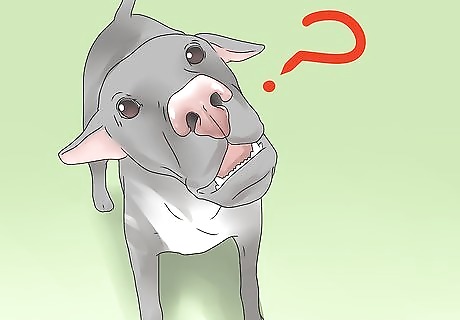
Understand that your dog will be very confused during the seizure. Your dog is not aware of his surroundings. Your dog's higher centers of consciousness are overridden during the seizure, and his brain is flooded with random electrical stimulation, stifling the conscious centers. He will probably not respond to his name, or anything around him. Your dog cannot see or hear because his hearing and sight centers in the brain are being swamped by random electrical messages.
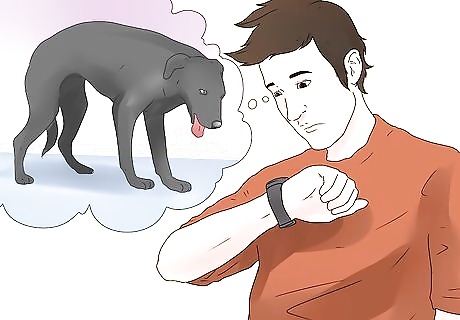
Recognize if the seizure lasts longer than 20 minutes. If your dog has a seizure lasting longer than 20 minutes, get him immediate veterinary attention to avoid permanent brain damage. This is known as status epilepticus and needs urgent veterinary attention to reduce the risk of long term brain damage. Know that the average length of a seizure is around 2 to 3 minutes. Seizures generally do not take too long to cease, although it can seem much longer when it happens to your pet. Less commonly, seizures can be longer, around 5 – 10 minutes

Be aware when your dog has entered the post-seizure phase. After a while, your dog will come out of his seizure and enter the post-seizure phase. Commonly, your pet will seem confused, disorientated, and wobbly on his legs. He may wander aimlessly, and even bump into walls as if he is blind. This phase can be brief, a matter of 5 minutes or so, whilst for some it lasts for hours. A normal seizure does not usually cause any permanent damage, and the disorientation and blindness are temporary. One slightly bizarre symptom of this is that some dogs seem very hungry, and actively seek out food.
Recognizing Events that Mimic a Seizure
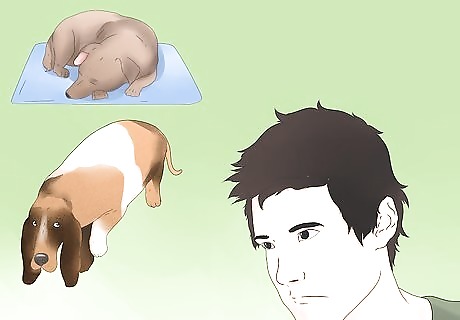
Understand that not all events that look like seizures are the same. Not everything that at first sight looks like a seizure, is a seizure. Some things that are commonly mistaken for a seizure are: Fainting due to a cardiovascular event: This is when there is insufficient blood perfusion throughout the body leading to oxygen deprivation to the brain, resulting in your pet losing consciousness. Fainting due to low blood pressure Pain reaction: An exaggerated behavioral response that can mimic a seizure.

Recognizing when your dog experiences a faint of cardio-vascular origin. A faint can be confused with a seizure, because it looks similar when your dog drops to the ground and loses consciousness. However, a faint is caused by inadequate oxygen supply to the brain, which results in your dog briefly losing consciousness. The most common cause of faint is an irregular heartbeat. Some dogs appear perfectly well and have no other symptoms, whilst others have a history of coughing, heavy breathing, or reluctance to exercise. The key differences between a faint and a seizure are: Before a faint the animal shows no aura signs: the loss of oxygen to the brain and drop in blood pressure happen almost instantaneously. During a faint the animal's muscles are relaxed (in a seizure, the muscles are rigid, and the legs are extended): The muscles are not being given any messages at all. No loss of bladder or bowel control during a faint: The dog is in a state of relaxation, rather than heightened muscular activity. No chomping the mouth, or excessive salivation: A faint does not last long enough for enough saliva to be produced for your dog to drool. On average, a faint lasts no longer than 30 seconds: An average seizure lasts 2 to 3 minutes. After a faint the animal acts as if nothing has happened (no post-seizure signs): Once circulation is restored, the dog acts normal again.
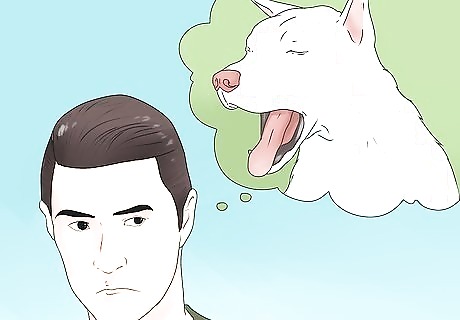
Spotting a faint of neurological origin. The longest nerve in the body, the vagus nerve, passes along the neck. When pressure is applied to this nerve, such as when a dog pulls on his collar, it can cause a dramatic slowing of the heart rate. If the heart slows too much, the blood supply to the brain is reduced and the dog may faint. This same thing can happen if the dog coughs excessively, or strains abnormally hard to pass feces. The differences between this faint and a seizure are the same as listed above.
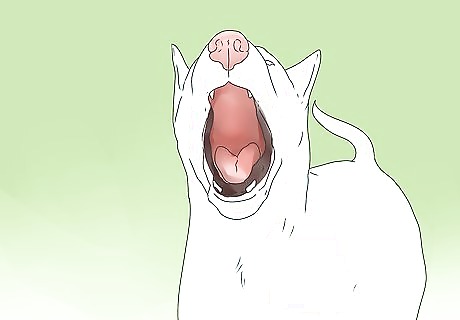
Knowing when your dog is overreacting to pain. Some sensitive dogs can overreact when stung by an insect. They cry and whine, and then may throw themselves to the ground to gnaw at the spot that has been stung. This erratic behavior can sometimes be mistaken for a seizure. The difference is that the dog remains conscious, and if you distract him, he knows what's happening around him and can respond to his name.

Take note of your dog's seizures when they occur to better prepare for next time. Rather than feel helpless when your dog has a seizure, remember to time when it starts and stops. This is useful information for your veterinarian. Also, if you have a phone on hand, record video of the episode – again, it can prove invaluable for a clinician to witness the episode first hand.














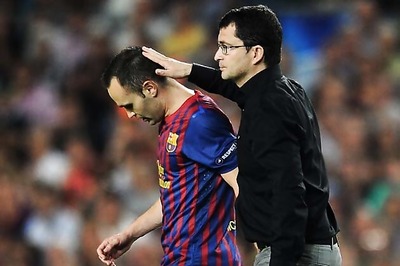



Comments
0 comment